Rupert Powell – Bukamanzi Cottage
As ever it’s only been the smaller creatures who have stuck around long enough to have their photograph taken – the duiker, reedbuck and hares that I’ve been seeing around the cottage buzz off pretty quickly. The little mouse with a black stripe down its back was the best character this month
– a friend and I were having tea on the verandah when she appeared from beneath his arm. She had been nesting in one of the cushions and had darted out to object at being sat upon. She preened around for a bit before a gigantic leap into the garden. No sign of my swallows yet but I live in hope that they’ll return and sit on my bed-posts as they did once before. My love for my spiders was severely tested when I found one crawling up my face as I brushed my teeth. There really is a limit.
A Frog…
and a moth
Jen Fly – Kildaragh Farm
This chap found a warm place in the wood basket in the TV room, during the last cold snap.
I released him in the orchard . The toppies soon spied him and their alarm calls got all the other birds in quite a panic.
Pat Mckrill had this to say: ” From what I can see from the photos, I’m pretty sure it’s a Herald snake. The almost white belly colouration is typical and although not too clearly shown in the pictures, the head is darker than the rest of the body – another identifying feature. As with your specimen, a lot of Heralds lack the upper lip colouration, from whence came the iconic ‘Red Lipped Herald’ name, as well as the often well-defined light spotting along the body – also not visible. The prominent backbone on your snake would suggest that it’s searching for an early season frog.”
Mike and Anne Weeden – River Run Farm, Hopedale
While driving home on the Dargle Road the other night we saw three adult bush pigs crossing just east on the Dargle River bridge. They were fairly unconcerned by our approach but unfortunately we were unable to get a photo.
Nikki Brighton – Old Kilgobbin
What are your favourite sounds of Spring? Trees drip on leaf litter and rain trickles on tile roofs. The solid wu-hoo of a Spotted Eagle Owl and the screech of tree dassies. Pre-dawn chitter becomes a chorus, and as the morning wakes, oriels and clattering weavers join in too. The zing of a bee swarm moving their Queen. Faint patter of startled grasshopper hatchlings scattering. Skree of Yellow billed Kite, flap of a single Spurwinged Goose and sky high echo of Blue Cranes. The whisper of bat wings in the evening.
Grasslands are starting to bloom – Urginea capitata and Tulbaghia leucanthra in rocky places
Tritonia lineata on the road verge. Love the dark veins in the delicate yellow flowers.
These striking Merwilla plumbea stems had disappeared when I walked by a few days later – presume eaten by something.
This may be Orthonna natalensis but I really don’t know for sure.
Cyrtanthus breviflorus in the wetland
Arums flowering already too
Tiny orange mushrooms amongst the bracken fronds
I saw two single reedbuck, and one group of three. No Oribi spotted for the Annual Oribi count.
Samangos must be really hungry. They have eaten all the lemons on my tree.
This fellow boldly helps himself to apples and pears in my kitchen. I now hide my fruit in the oven.
Katie Robinson – Lemonwood
Wood Owls: I have been looking after Woody
and Jesse
for a few weeks now. They were given to me by Tammy at the Raptor Rescue Rehabilitation Centre for release in the forest.
After familiarising themselves with the sights and sounds of the bush, tonight is the night they venture out into the wild. I will miss them both and I so hope they remain in the area, or even better, make their home in my wood owl box at the edge of the forest, also erected by Raptor Rescue. They have been a delight to have here. What stunning birds. Good luck guys.
Another excitement for me is the arrival of a small family of Rock Dassies which I saw deep in the forest for the first time ever a couple of weeks ago. Such inquisitive creatures with the most endearing faces. Unfortunately I didn’t have a camera with me when they were close enough to photograph, but I will continue to try to capture one as they are sure to make everyone smile. The leader, I have called him Walter, sat for about 5 minutes, only about 50 metres away when I first saw him. He seemed completely mesmerised and unfussed by me and the dogs (who didn’t even notice him). What a pleasure.
I have had the privilege of using the Dargle Conservancy trail camera for a few weeks and have had some wonderful sightings of bush buck, bush pig, rock dassie, samango monkeys, water mongoose, porcupine, genet and jackal. I even caught a short video of 2 porcupines mating which I had never worked out before. How do they do it? In short, very carefully but the much smaller male made it look very easy! (If you would like to see some of Katie’s videos, then please visit the “Dargle” Facebook page, or you will have to come to the AGM next year to view the vids!)
Ashley Crookes – Copperleigh Farm
I think I have finally beaten Sandra Merrick for amount of images in 1 month! I had so many great opportunities and have enjoyed using my new Samsung cellphone to capture all of these images! I may just be retiring my poor old Canon…
Inhlosane gave me some great shots this month, usually around sunset I would walk the dogs and see these scenes
and this one was taken from our driveway
and this is by far my favourite capture so far
The sun rays were magnificent over the ridge towards Ivanoe
The little stream is still struggling a little, hopefully the rains will come soon (it’s only 10cm wide in this pic)
There’s an abundance of orange ladybirds at the moment
Yet have only seen a couple of locusts so far
A spider trying to stock it’s larder
A crab was a bit lost running up the trail!
And for the first time I saw a dung beetle (very hard at work) on the farm
Some lovely wildflowers
The Natal Green Snake was trying to hide in the bushes of the garden
The Night Adder was hiding in an old sack in the shed, I thought it was dead…I was wrong! It hissed and told me it wanted out
The Red Herald Snake was lying next to the trail late in the afternoon, hence the bad image, I managed to capture one action shot with the tongue out!
A Porcupine was visiting the old potato fields and left his or her trademark
And here’s something I’ve also never seen here before…
…a Glow Worm!
And finally, a stunning sunset peering from behind an old farm gate – enjoy!
Kevan Zunckel – ZUNCKEL ECOLOGICAL & ENVIRONMENTAL SERVICES
Kar asked me ages ago to send this to you, so sorry for the delay. I took this picture in a wetland in the upper uMngeni catchment just south of the Umgeni Vlei but on communal land while doing ground truthing work for the SANBI/UKZN project on ecological infrastructure (29°33’32.82″S 29°50’48.24″E). It was close to the road and tried to hide behind a reed but not successfully – hence the nice photo opportunity. Another one flew out a bit deeper into the system so it was great to see that there was a pair. I was with a colleague who is an avid birder and who was extremely excited about the sighting, so I guess it was quite significant.
Pat and Sandra Merrick – Albury Farm
The reedbuck have been returning – saw 8 around the dam one evening, 3 on the hill and 2 duiker. On another evening 7 reedbuck, 1 oribi and a duiker on the hill.
The european swallows arrived on the 23rd sept. Have seen the blue crane on and off over the month. Sometimes just one. We’ve seen a pair of Black-bellied Korhaan walking on the hills behind house and once on our driveway.
Stanley bustard flies over the farm quite often. It’s been 2 months since we’ve seen the Waterbuck. The Fan-tailed Widowbirds arrive in numbers on our lawn every day. The wagtail has 3 eggs – her nest is in the jasmine creeper once again.
The sparrows are nesting outside our study window again this year and the swallows are looking for a place to nest around the house.
Our neighbour told us that he had found 2 dead male reedbuck near his dam – it looked like they had been fighting as there were lots of puncture wounds.
The interesting news is that I put a picture of a ringed wattled crane in the dargle newsletter in the july issue. No one came forward with information about the ring tagging of this bird. Then on facebook on the Karkloof conservancy page, it was mentioned that a ringed wattled crane had been identified, so I sent them my picture to see if they could identify my one. It was sent to Tanya Smith and she identified it.
Comment from Tanya Smith of the Endangered Wildlife Trust’s African Crane Conservation Programme re Sandra’s July Sighting of a Wattled Crane: “This bird was ringed as a wild chick of about 11 to 12 weeks of age, it was a chick of a pair we monitor closely with the farmers in the Kokstad area. It was colour ringed as a chick by me and Cobus Theron on a farm called Hebron located between Franklin Vlei and Kokstad in January 2014. This is the first re-sighting we have had of this chick since it left the farm as a flying teenager, and considering the distance it has moved since then it is a great sighting, so thank you very much for taking the time to take photographs and to report the information. I am not sure of the sex of the bird unfortunately.
Another interesting story was told to me by a friend at Mount West: She was looking at a Common Duiker walking along her dam early one morning – it was following a serval – the serval was aware of being followed but seemed unconcerned.
Here is the pic of the Duiker looking at the serval, but you have to look very hard to see the serval!
Here the Serval is out in the open
Neville van Lelyveld : Farm Report for Iain Sinclair, Benn Meadhon Farm
Spotted a pregnant Oribi last month, and somewhere in this picture, the Oribi is hidden.
Sunset over the farm




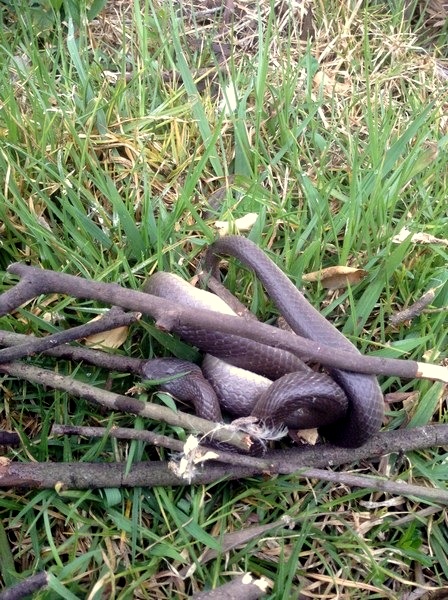

























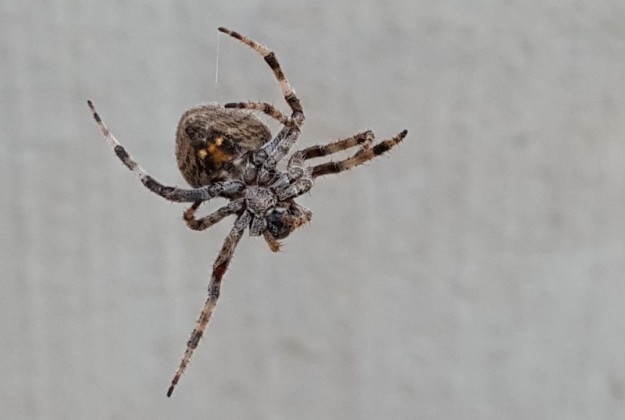









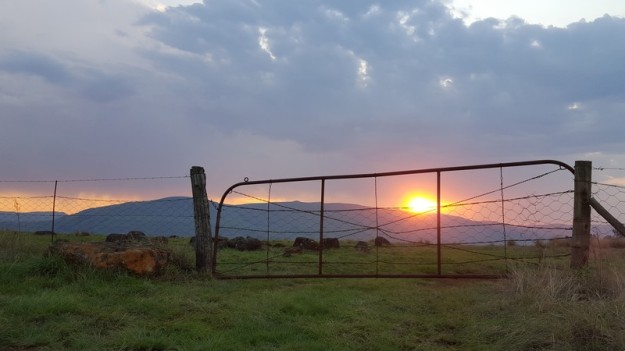


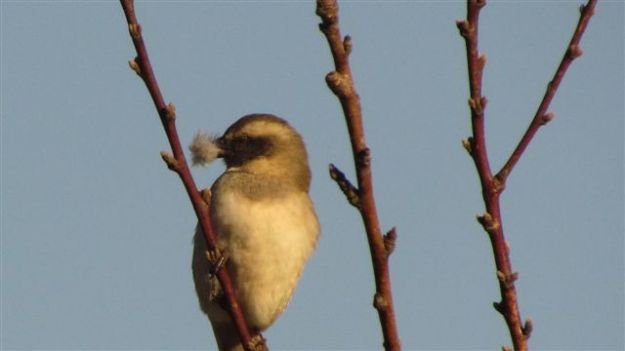









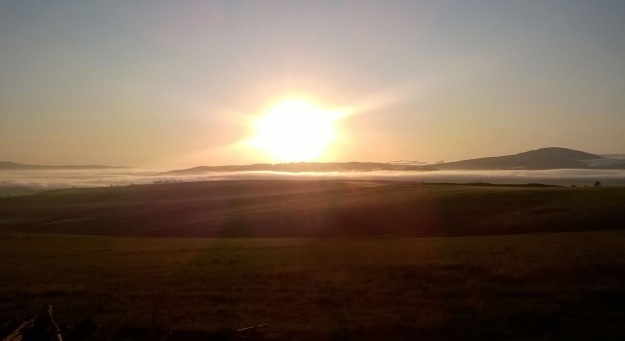
Staggering wealth of lovely photos with suitable and very helpful comments in the September 2015 Dargle Sightings. Gosh, you folk are amazing, and do keep it up
LikeLike
What a privilege to enter the world of all these observant lovers of the bush and its secrets. Thank you for sharing your sightings and your vision
LikeLike
i feel the same as the above two commentators – and must add Ashley Crookes certainly had amazing photos of sunsets at Inhlosane, and a lot,of firsts for me too! tHank you to everyone for these Good News ‘newspapers’.
LikeLiked by 1 person
Thanks Meriel! Glad that our photos can be enjoyed by everyone and thank you for the kind words!
LikeLike
Oh dear! i did fall in love with the Tailor of GlousterGlouster- the mouse on the upholstered furniture – I’m sure his sewing machine was nearby!
LikeLike